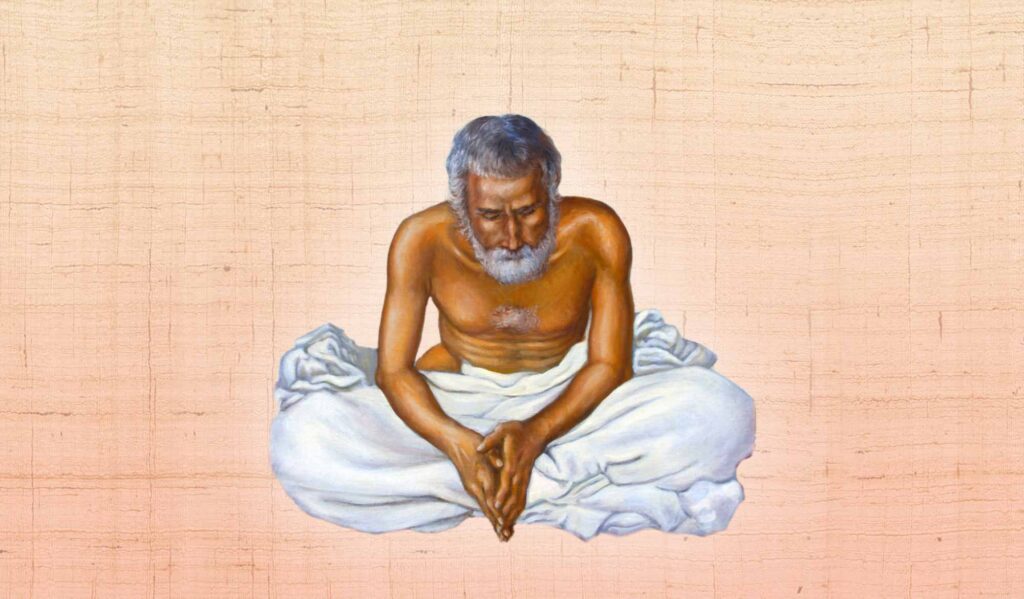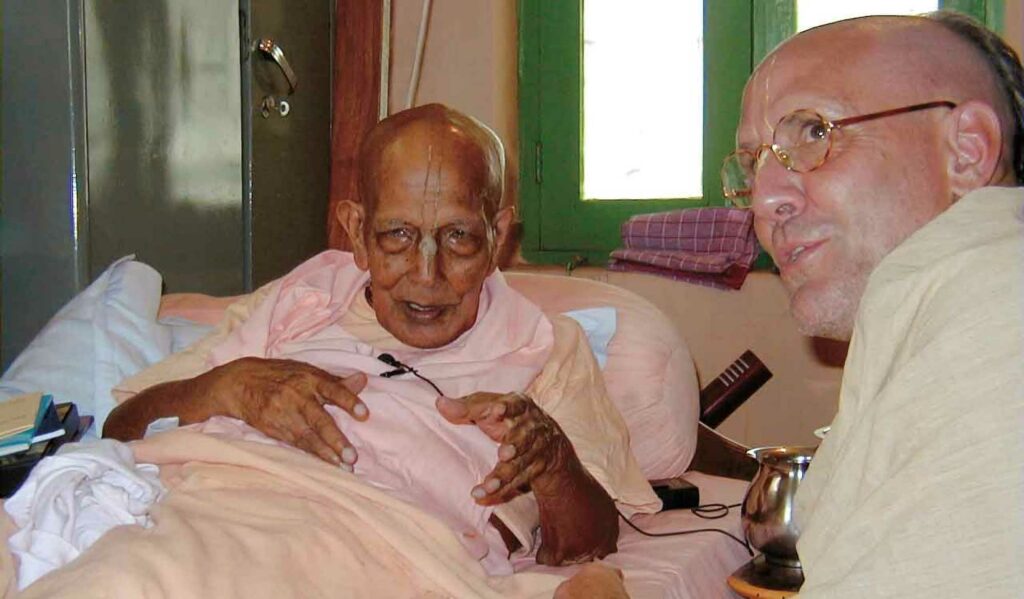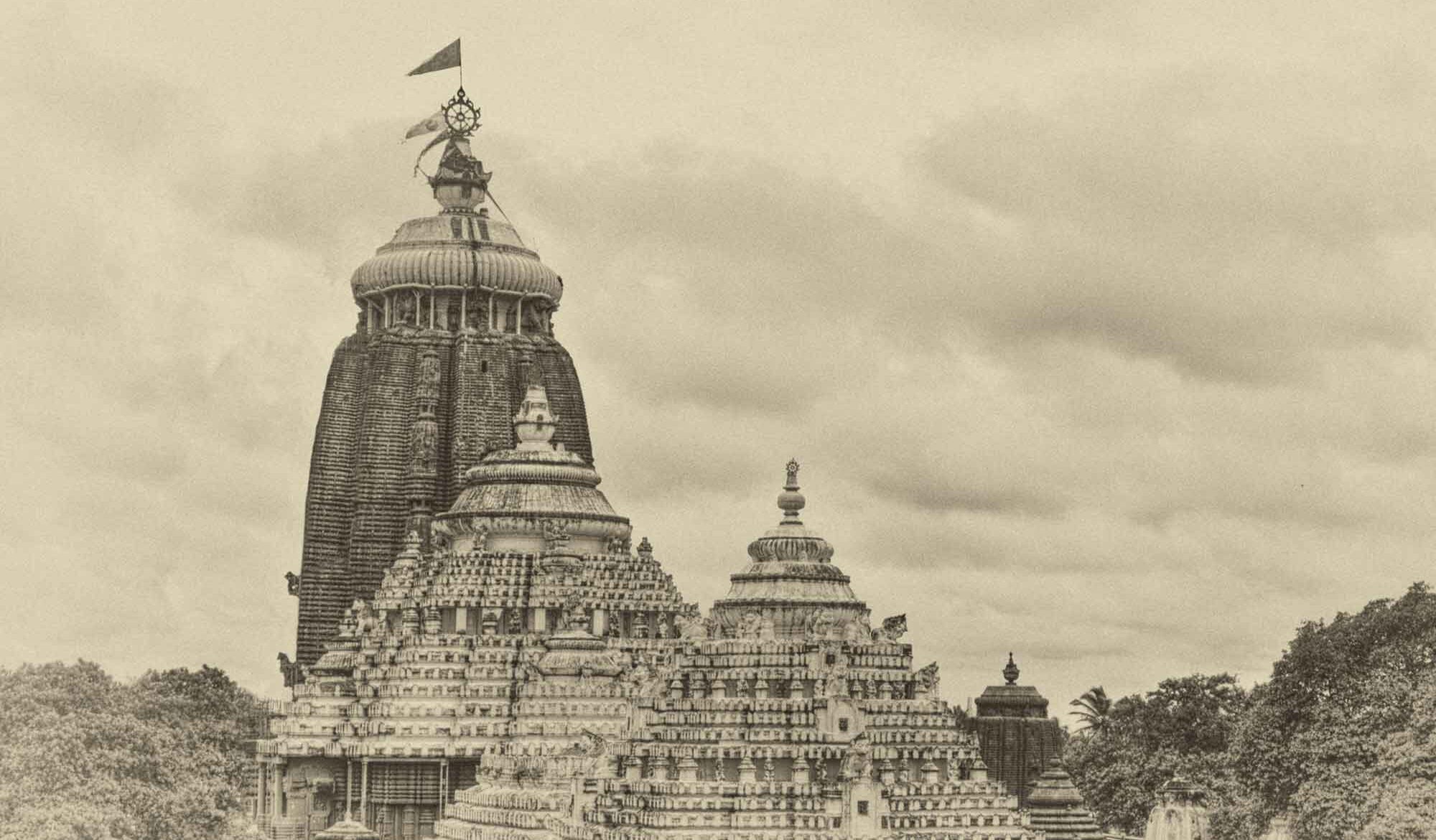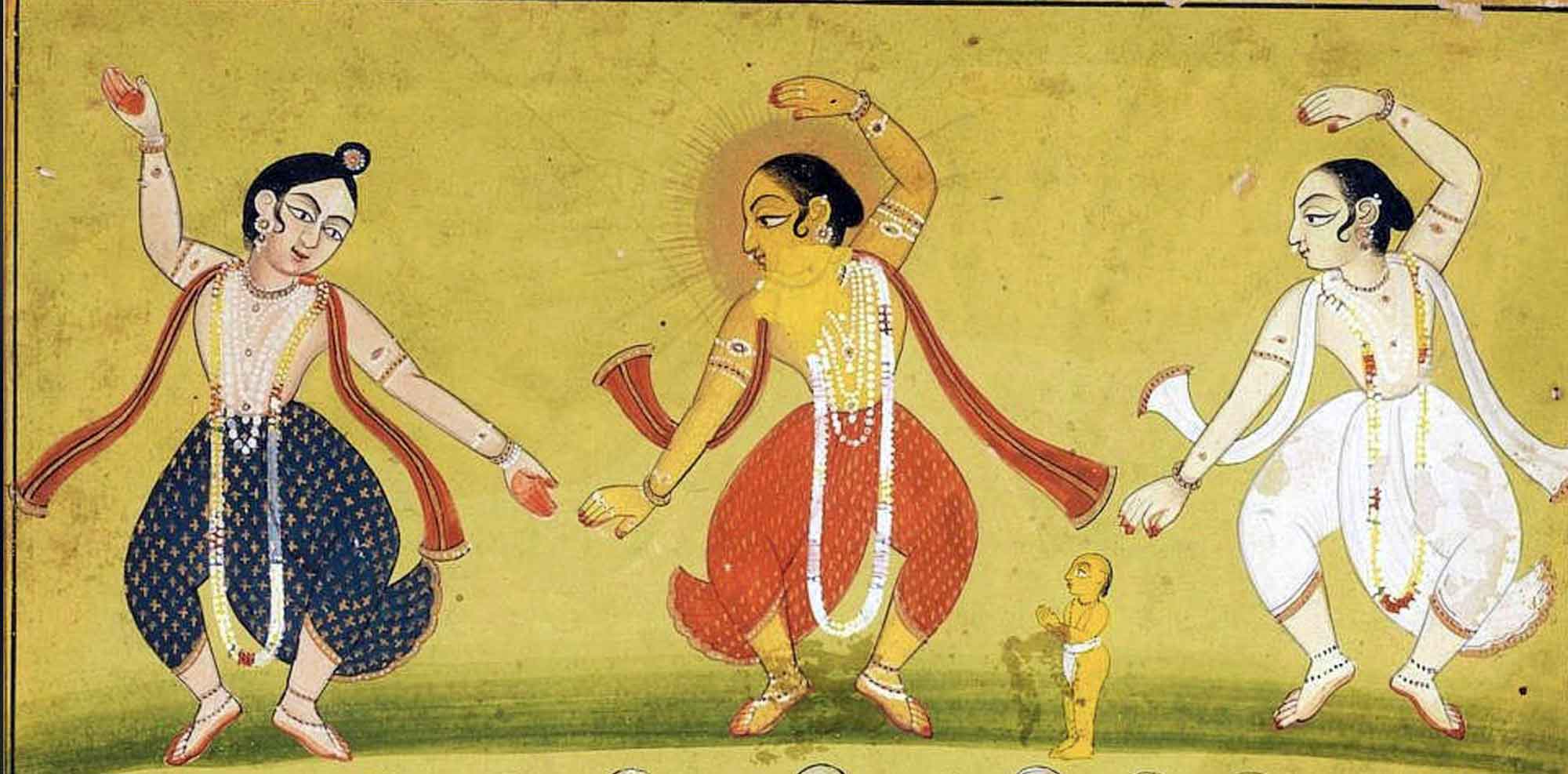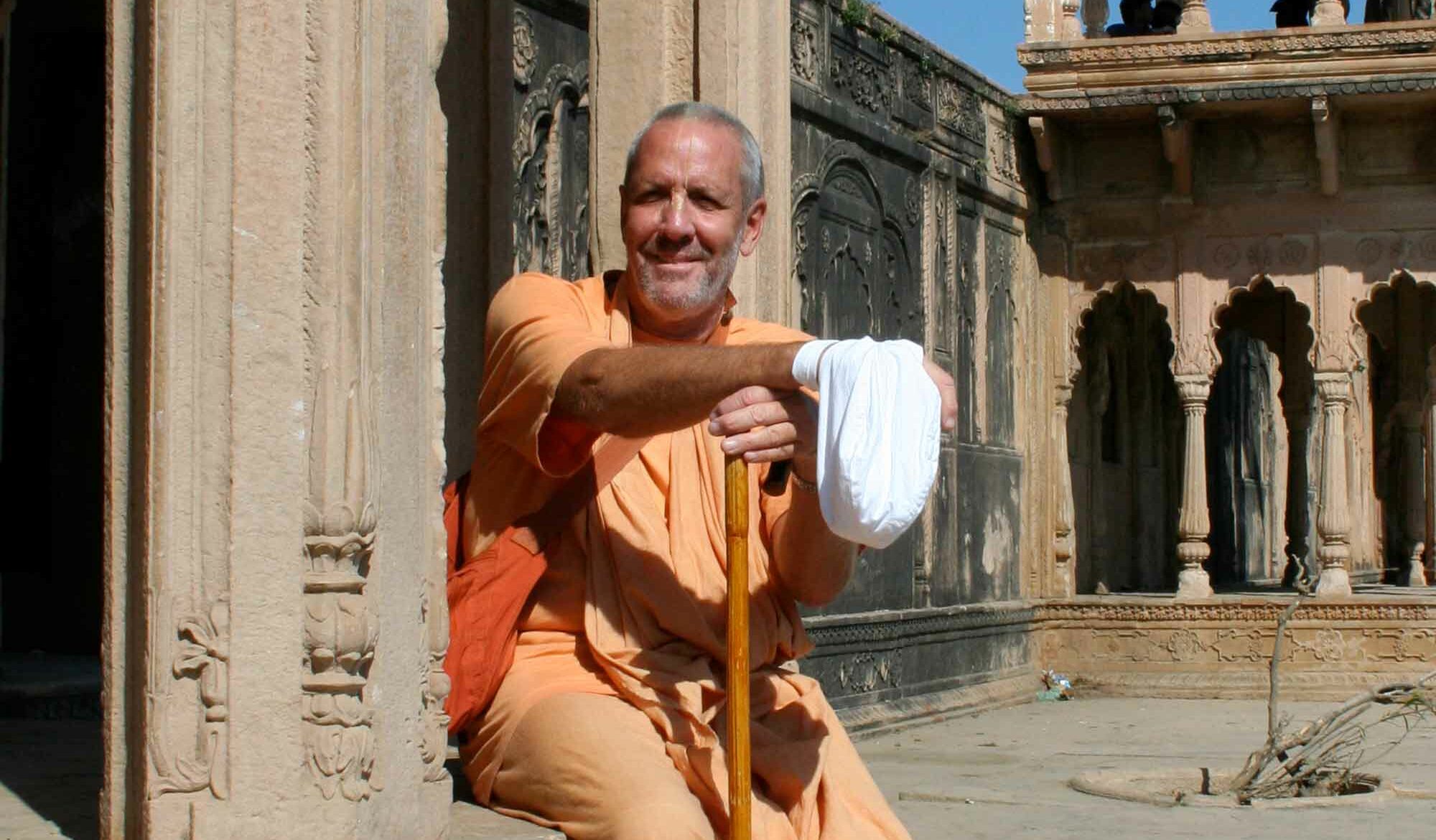by Swami B.G. Narasingha
“Banaras - The City of Light” was originally written by Śrīla Narasiṅgha Mahārāja for Clarion Call magazine in 1990. This article explains something of the history of Banaras and its significance to Hindus.
Long before the days of the American settler, or before Europe had a place on the world map, Banaras, on the western bank of the Ganges, had become a legend in her own time. In fact, Banaras may very well be the oldest living city in the world. In the words of the late Reverend M.A. Sherring:
“Twenty-five centuries ago, at least, Banaras was famous. When Babylon was struggling with Nineveh for supremacy, when Tyre was planting her colonies, when Athens was growing in strength, before Rome had become known, or Greece had contended with Persia, or Cyrus had added lustre to the Persian monarchy, or Nebuchadnezzar had captured Jerusalem, and the inhabitants of Judea had been carried into captivity, she had already risen to greatness, if not glory.”
I have visited Banaras on several occasions during my travels in India. The view of the city by boat from the Ganges is outstanding. The city extends for three miles along the banks of the River Ganges. There are more than seventy magnificent ghats (large stone staircases descending to the river) where numerous temples, shrines, yoga ashrams, and pavilions overlook the sacred river. When the rays of the morning sun fall upon Banaras, everything takes on a gorgeous golden hue, as if the city were self-effulgent. From the pre-dawn hours until after dusk the sacred life of the Hindus centres about the river. Bathing, worshiping, praying, meditating, even cremation, are all happening simultaneously at the ghats. The dramatic impression left in the mind, having seen Banaras even once, is not easily forgotten.
In the old part of the city there are many narrow streets filled with shops and stores of every description. Silver and gold merchants, expert craftsmen at work making brass and copper vessels, cloth merchants and tailors, fruit and vegetable sellers and fresh juice stalls fill the narrow lanes. Bare-chested men, perched on small wooden platforms in open air restaurants, sit cross-legged cooking puris (deep fried flat bread) and vegetables on open wood fires—-the aroma of which attracts hungry passers-by. Women in colourful saris and men clad in all white cotton shirts and pants move to and fro through the busy thoroughfares while large white brahma-bulls wander freely about. Banaras is typically Indian.
The most famous street in Banaras is Vishvanatha Lane. Entering the lane from the vicinity of Dashashvamedha Ghat and continuing north, one soon comes to the entrance of the principle place of worship the ancient Vishvanatha Temple. Marble floors worn by the constant influx of barefoot pilgrims, beautiful silver altars decorated with flowers, the scent of burning oils and incense, arched doorways, and finely sculpted stone pillars all combine with the ringing of bells and the sounds of gongs to create an enchanting atmosphere. The upper portion of the inner Sanctum is crowned with a golden dome which can be seen from the street. One hundred thousand pilgrims come to the Vishvanatha temple every day, and on festival days the attendance increases many fold.
Vishvanatha is a name for Shiva, the predominating deity of Banaras, who is considered an incarnation of the destructive quality of Godhead. While talking to a brahmana priest at the Vishvanatha temple, I learned that the Hindus not only credit God with the creation but with the destruction of the universe also. The priest showed me a passage in one of his old, handwritten palm leaf scrolls:
“Just as milk is transformed into yogurt by the action of acids, yet the effect ‘yogurt’ is neither the same as nor different from its cause, namely milk, so I worship the primeval Lord, of whom the state of Shiva is a transformation for the performance of the work of destruction.” (Brahma-samhita)
Banaras is a very special place for Hindus—it is said to be the place where liberation is easily achieved “Kashyam maranam muktih, “In Kashi [Banaras] one easily attains liberation or freedom from samsara, the cycle of birth and death.” There are seven ancient holy cities, such as Banaras, mentioned in the Hindu scriptures. “Ayodhya, Mathura, Haridwar, Dwaraka, Kanchi, Ujjain, and the city of Kashi.” Of these, Kashi, “the City of Light” refers to Banaras. The Hindus call Kashi the city of light because it illuminates truth and reveals reality. Hindu philosophers have always believed that reality is transcendental to the plane of mundane existence. The body, they say, and the world around us are always changing due to the influence of time. Due to the time factor the world has no permanent existence and therefore cannot be the ultimate reality. Hence, for a Hindu, reality does not exist within the jurisdiction of time, the great force which turns the cycle of birth and death, moving the world from beginning to end. The Hindus call it kala-chakra, “the wheel of time,” but Banaras, they say, is its hub, where movement or time has no influence. Indeed, in Banaras, time goes by as if having no influence at all: Banaras remains as she is, as she always was, and the soul of man is said to be set free under her divine influence.
India’s holy places are known as tirthas or “crossing places” between heaven and earth. Tirthas are not to be confused with high energy centres, like mountain tops or areas where the forces of nature are present with overwhelming proportions. They are points where the marriage between transcendence and the mundane take place. These crossing places are compared to shallow water in the raging river of birth and death—shallow water, that is, in the sense that mundane influence is at a minimum. This makes it easier for the seekers of eternal truth to make the journey to the other side—to the side where birth and death have no jurisdiction. A tirtha not only provides a crossing place for the “upward” journey of the soul, but it also provides for the “downward” crossing—for the crossing of devas and other higher entities who sometimes descend to this world for the good of mankind.
The residents of Banaras are called “Kashi-vasis,” meaning those who live in Kashi. A Kash-ivasi lives a good life, following the path of religiosity, economic development, and material enjoyment. Hindus consider these the first three goals of life: dharma, artha, and kama, respectively. However, a Kashi-vasi is said to automatically achieve the fourth goal of life, moksha or liberation. To achieve liberation usually takes many, many lifetimes of severe penance, austerity, meditation, and yoga practice. But the Kashi-vasis are said to achieve liberation in only one life. They believe that if one lives and dies in Banaras he will immediately be freed from the cycle of birth and death.
There are more than a million people living in Banaras—Bengalis, Marwaris, Maharastrians, Nepalis, and so on. But above these national designations they share a common identity—they are all Kashi-vasis. The spiritual benefit of living in Banaras is why they are there. For them, occupation and employment are secondary concerns. Slogans of liberation, moksha, are written on walls and billboards throughout the city in the same manner that one would expect to see political propaganda or cinema advertisements. One frequently used and well-known slogan goes like this:
“This we know for certain: Where the River Ganges flows, in the place know as Kashi, moksha, liberation, is guaranteed.”
In addition to the resident Kashi-vasis there are those who come to Banaras at the eleventh hour. They come to Banaras on death’s notice to spend their last days in the sacred city before leaving this mortal world. They come for kashi-labh—”The benefit of Kashi.” Throughout the city there are innumerable hospices that open their doors to accommodate the dying, providing them the psychological and spiritual support they need to face death fearlessly. A hospice usually consists of a compound with thirty to forty rooms set around an open courtyard. There are trees and flowering plants in the courtyard which make a park-like environment. The rooms are well ventilated with plenty of sunlight.
Checking into a hospice, a dying person is given a room, humbly furnished with one cot, where he may remain with his family or friends until the end. Often the dying prefer to lie on the floor where they will be in contact with the earth, for Hindus consider the earth to be our “Mother.”
Each hospice has a special room set aside called the puja room where sacred hymns and the names of God are chanted around the clock. The first rule of a hospice is that only those who are dying and who believe in liberation in Kashi, and have come especially for “kashi-labh,” may stay there. Those who wish to get well by taking medicine should stay elsewhere in a hospital. Written on the wall at the entrance of a hospice is an encouragement for the dying: “Where else does a person obtain liberation as he does in Kashi, simply by giving up the body, with very little effort at all!”
The Hindus believe that when one is dying he should prepare his mind and consciousness for departing from this world and entering into the next. It is as important for a Hindu to have a good death as it is for him to have a good life. Along with the art of living, they say, one must also master the art of dying.
The Hindus believe that what the mind thinks about at the time of death will determine the state of being in their next life. Therefore, they say that one should fix his mind on God. In some cases, though, the old and infirm cannot utter the names of God at the time of death, so the family members chant the names for them.
Upon visiting a hospice, I found that it was not a morbid atmosphere as the Western mind might imagine. Rather there was a solemn air about the hospice, an air of profound expectation. There was occasional singing of devotional songs, and meditative music was played for the benefit of the patients.
After death, before the body is cremated, the deceased is kept in state for a few hours in the home or hospice while friends and relatives come to offer flowers and a few parting words. Then the deceased’s remains are carried through the streets on a decorated palanquin, followed by well-wishers who chant repeatedly, “Rama nama satya hai! Rama nama satya hai!” “God’s name is Truth! God’s name is Truth!” Then the body is taken to the cremation ghat and purified with the sacred waters of the Ganges. Finally, the body comes to rest on the funeral pyre. The body is then surrounded with burning incense, sprinkled with sandalwood oil and covered in flowers—all in the midst of friends, relatives and priests, who utter sacred hymns. Finally, the eldest male member of the family ignites the pyre with the sacred flame.
During these ceremonies for the dead more emphasis is given to the departed soul of the deceased than to the body he has left behind. After the cremation is completed the ashes of the deceased are reverently placed in the Ganges. His family members then perform the shraddha ceremony for eleven days—consisting of fasting and reading from holy books, reciting prayers and offering specially prepared foodstuff to help the departed soul through the transition period to his next life. The shraddha ceremony is not a period of mourning but a period of purification—both for the deceased and for his family.
Hindus believe that until the body of the deceased is destroyed by the cremation fire, the soul remains in this world in a subtle form due to attachment. But when the body of the deceased is cremated the soul is then freed of lingering attachments to bodily ego. Thus cremation is thought to expedite the soul’s passing to his next life. Furthermore, since it is believed that liberation is achieved by one who dies in the sacred city of Banaras, or on the banks of the river Ganges, or where the names of God are being chanted, the Hindus say there is no need for lamentation for the dead. But if a Hindu cannot die with at least one of these three benefits, then there is certainly cause for grief.
Banaras has recently become very popular among the many European and American tourists who come to India each year—though they have a different fascination with this ancient city than do the Hindus. Most Westerners come to Banaras in search of fine hand-woven silk dresses and woollen carpets. Some come to photograph the yogis and snake charmers who live along the banks of the river, to enjoy a holiday and discover a culture different than their own. Inevitably, though, after hearing about the cremation sites, everyone is drawn to this strange spectacle which sometimes proves to be more than they bargained for. In fact, the sight of a body burning in the funeral fire can sometimes be so overpowering that many visitors have to return to their hotel rooms to recuperate.
Death is an undeniable fact of everyday living. Hundreds of people die every day in Banaras and are taken to the ghats for cremation. At any given moment one might see a body being carried through the streets in route to one of three main cremation sites. Trucks loaded with wood for burning the dead arrive in the city every day. Stretchers for carrying the dead are sold at road side shops along many of the main bazaars. It is also not uncommon to see a crowded bus entering the city from the countryside filled with people and carrying a dead body wrapped in white linen on the roof. The Hindus have been known to bring the body of a deceased relative from as far away as five hundred miles just to be cremated at Banaras. At the cremation ghats sometimes as many as a dozen cremations take place at once—each on a separate pyre. The burning ghats are in operation twenty-four hours a day, 365 days a year. Although death is always present, they say one never really becomes callous to it. Rather it is a constant reminder of the temporary nature of this world.
Although Banaras is known to Hindus as “the city of light,” it has been dubbed by many Western visitors as “the city of death.” One American lady commented on her visit to Manikarnika, the city’s busiest cremation ghat, “It was horrifying! Death was everywhere. Dead bodies were being thrown into blazing fires. The smell was sickening. Have they no respect for their dead?” Coming face to face with the reality of death and the total destruction of the body can be an unnerving experience. Not everyone is ready to accept that reality.
In India, cremation is also the only logical means to dispose of the body. As opposed to the burial system widely practiced elsewhere in the world. India simply doesn’t have enough land to bury her dead, India is a country literally thousands of years old and there are more than 750 million people living there. Therefore, burying the dead becomes impractical. If India buried her dead, then in the centuries to come there would eventually be a shortage of land.
Death and dying in Banaras, like many Indian traditions, is often misrepresented to the Western public by sensational journalism and inaccurate reporting. An impression often given in the West is that Banaras is under the grip of death—bodies are burned as a savage ritual without respect for the dead and an atmosphere of darkness and despair hover above the city. But nothing could be farther from the truth.
In contrast to our “death denying” culture in the West where death is hidden from view—forestalled as long as possible and often feared as the end of everything—the Hindus are comfortable with the fact of death. Death is considered natural, unavoidable, and the most certain of human realities. Death is something that everyone has to face regardless of religion, culture or nationality. Therefore, the Hindus say, “Why not learn to accept it and deal with it in a dignified manner?”
Banaras has been described as India in a microcosm. In Banaras all that is Indian comes before us in an instant. She is ever so peaceful and charming, yet Banaras challenges the very concepts and values of Western civilization. But if that challenge is met with an open mind we may learn something for our eternal benefit. I have several times seen a body burned on a funeral pyre at Banaras, and it has given me a desire to end my body in the same way. Everything is over at once. The body is dead and the spirit has departed. The purifying fire destroys in a few hours all that remains behind, casting it to the wind, turning it into smoke and ashes. As the ancient texts of India say,
“Let this temporary body be burned to ashes, and let the air of life be merged with the totality of air.” (Ishopanishad)
While death is one of the most prominent features of Banaras, the city itself lives on. I don’t think that in all of my travels there is anyone place that brings to mind the importance of life as Banaras does. A visit to this holy city is a wise investment for anyone interested in gaining deeper insight into the mysteries of our life here and hereafter.
Banaras is like the soul itself. Although she is ancient, she is young as well. As the soul lives forever yet remains ever youthful so Banaras seems untouched by time. Another traveller, Mark Twain has described her thus: “Banaras is older than history, older than tradition, older even than legend, and looks twice as old as all of them put together!” Indeed, Banaras is more than old— Banaras is practically eternal.
More Articles by Swami B.G. Narasingha
Purī – Cultural Cataracts. A British View of India
'Purī – Cultural Cataracts. A British View of India' was written by Swami B.G. Narasingha on 1990 for Clarion Call magazine, Vol.3 issue 1. In this article, Swami Narasingha gives a history of the Jagannātha Temple in Purī, Orissa, as well as a description of the Ratha Yātrā festival and how the British perceived it.
Śrī Caitanya: Fulfilment of a Transcendental Dialectic
‘Śrī Caitanya: Fulfilment of a Transcendental Dialectic’ was written by Swami B.G. Narasingha and first published in Clarion Call magazine, Vol.2 issue 4 in 1989. This article gives a short biography and explanation of the life and teachings of Śrī Caitanya Mahāprabhu. This essay was later published in Swami Narasingha’s book ‘Evolution of Theism’.
Vraja Bhāva
‘Vraja Bhāva’ was written by Swami B.G. Narasingha on April 6th 2001. Swami Narasingha answers a question concerning ‘vraja-bhāva’ and the bhajanas of Mīrābāi and explains how there’s much more to real vraja-bhāva than singing a few Hindi bhajanas…

